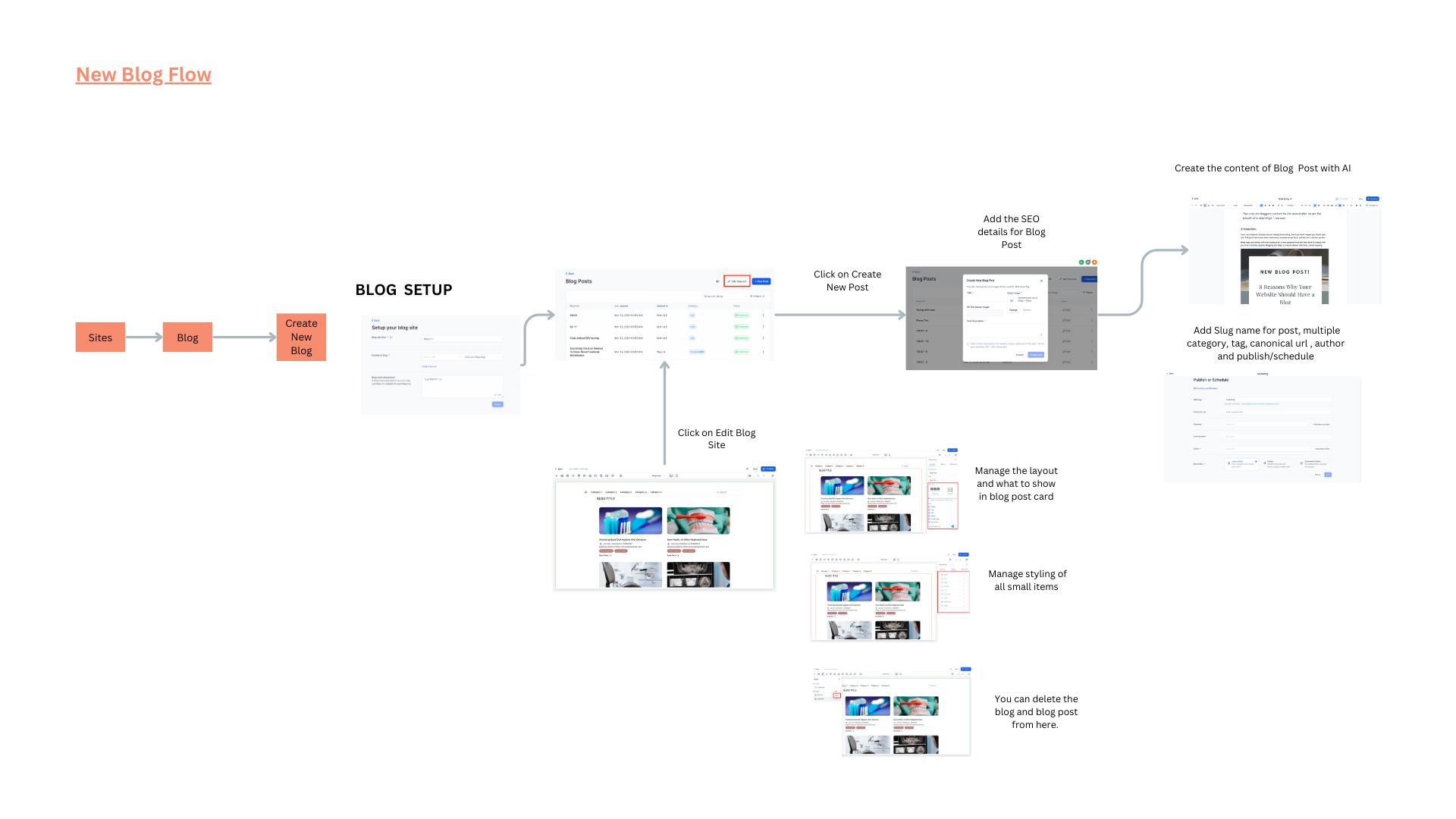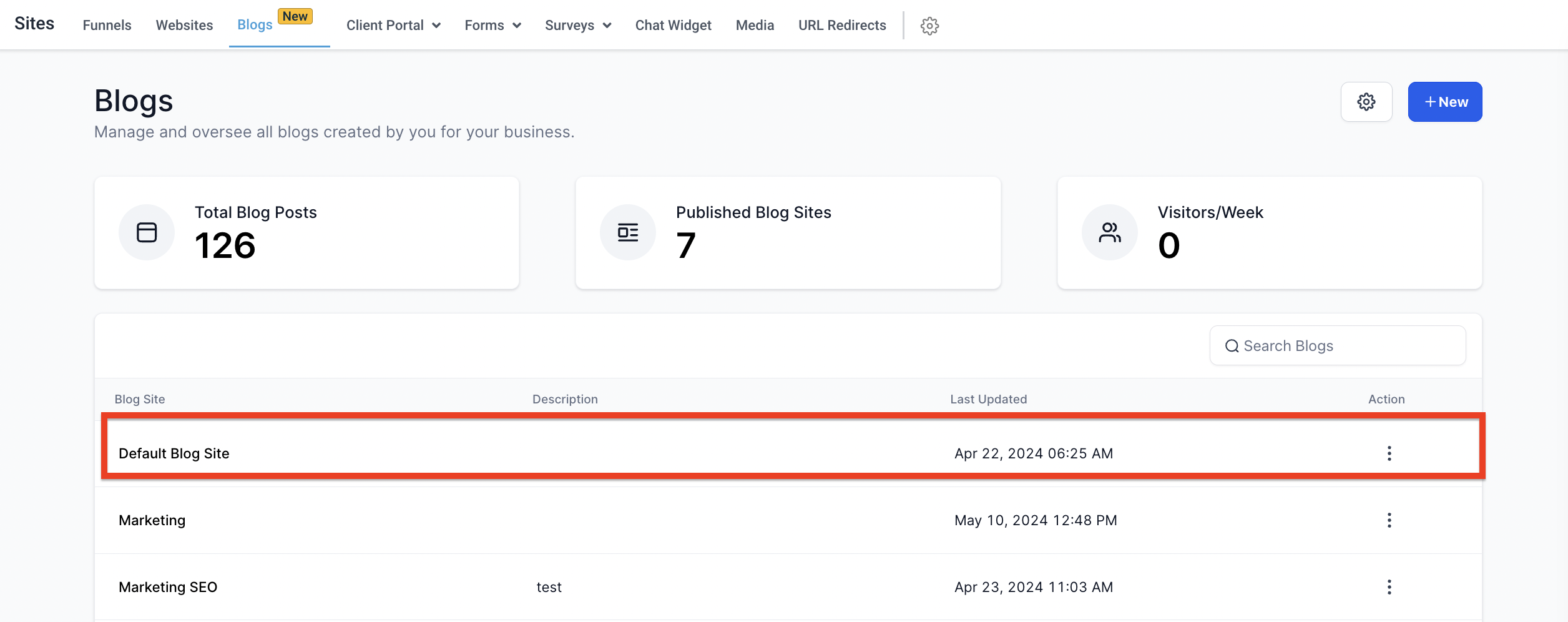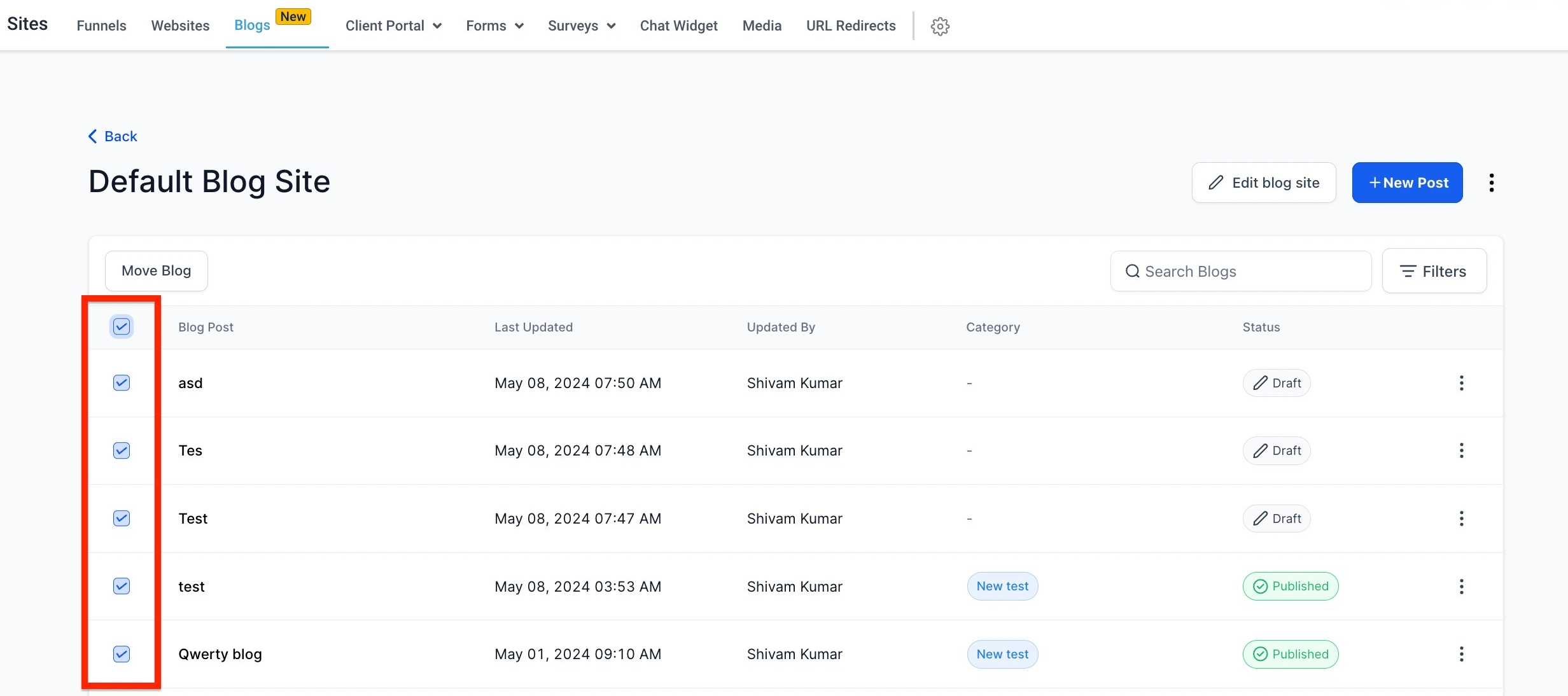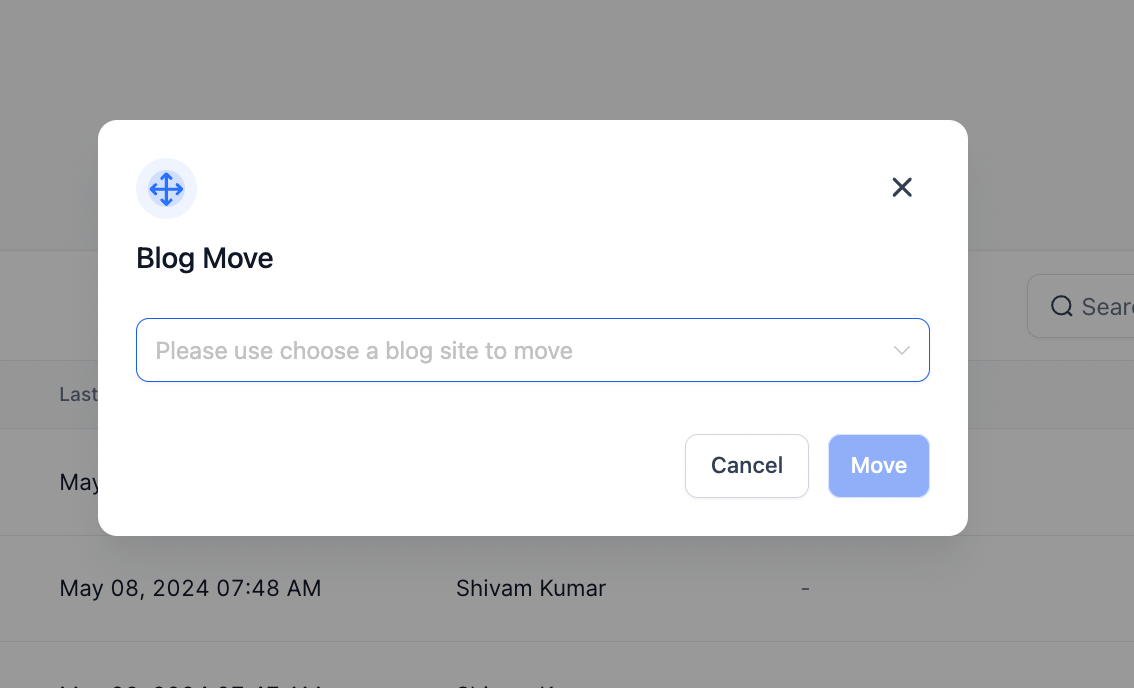A blog, a hybrid of "web" and "log," allows authors to curate captivating narratives, offering readers a gateway to a wide variety of knowledge and creativity. Each click transforms the mundane into the extraordinary. It's a dynamic platform where passion meets prose.
Blogs changed their perspective by simplifying the following process based on feedback and constant iteration.
We have removed b and c in the URLs. Our blogs will function in the following manner
A. For example if the Domain is: abc.com
User can specify the abc.com/blog as /blog as the slug. (If the domain page already exist, it will add other unique parameters after scanning all the URLs and domain in funnels/websites)
The blog post name is defined as abc.com/post/post-name
The category URL will be abc.com/blog/category/category-name
Tag URL will be abc.com/blog/tag/tag-name
Author will be abc.com/blog/author/author-name
B. For example if the subdomain is: blog.abc.com
User can specify the blog.abc.com, they will be required to add slug but it will not be considered.
In Domain, please go to Edit and add the default page of Blog Home.
The blog post name is defined as blog.abc.com/post/post-name
The category URL will be blog.abc.com/category/category-name
Tag URL will be blog.abc.com/tag/tag-name
Author will be blog.abc.com/author/author-name
Every time a blog post is published, the user does not have to update the sitemap or add robots txt. When a new blog post is published, the sitemap for the domain is automatically updated.
Blog post pages will open in new page, it will not open in same page. We allow customization of look and feel with form (subscribe form) or add custom comment area or any other customization like text/subtext/calendar
In SEO, canonical tags suggest to Google which version of the page it should index, consolidate link equity (ranking strength) to, and show in search results.
Blog can be created with custom layout with the option to show what you like in the card view of blog.
An important function of a blog is how it flows and works. With the flow, blog creators can display their blogs in a way that catches and holds their audience's attention, and readers can navigate the blogs more easily for easier reading. The following image shows our new blog flow design that will give you a better idea of how we enhanced that process for both blog creators and readers.

Users can create new blog posts on the old blogs that were added to funnels and websites. Old blogs will have issues with URL simplification, canonical URLs to fix SEO indexing issues, and automatic updates to XML sitemaps. The blog posts will become part of the default blog.
To resolve these problems, it is better to move to a new blog and create new blog posts. Once the new blog flows are released, new accounts will work.
1. Go to "Sites" > "Blogs"
2. In the Blogs, there will be option of "Default Blog" which were hosted in Funnels/Website.
3. In the "Default Blog", it will have the blog posts.
4. Select the "Checkbox" of blog post.
5. Click on "Move Blog" the selected blog post.


